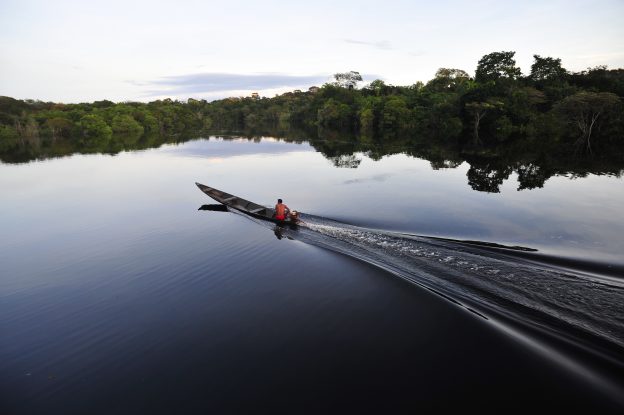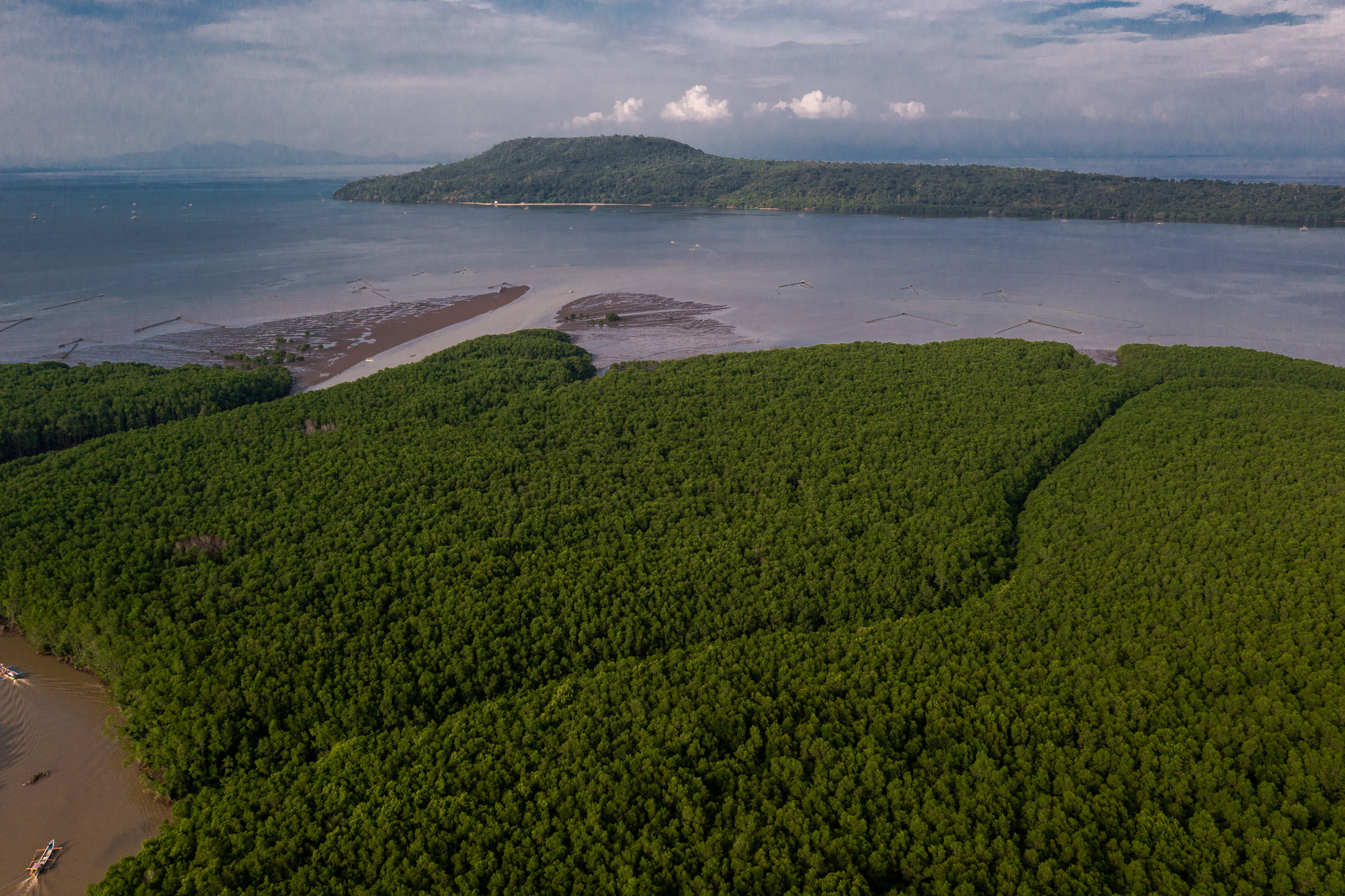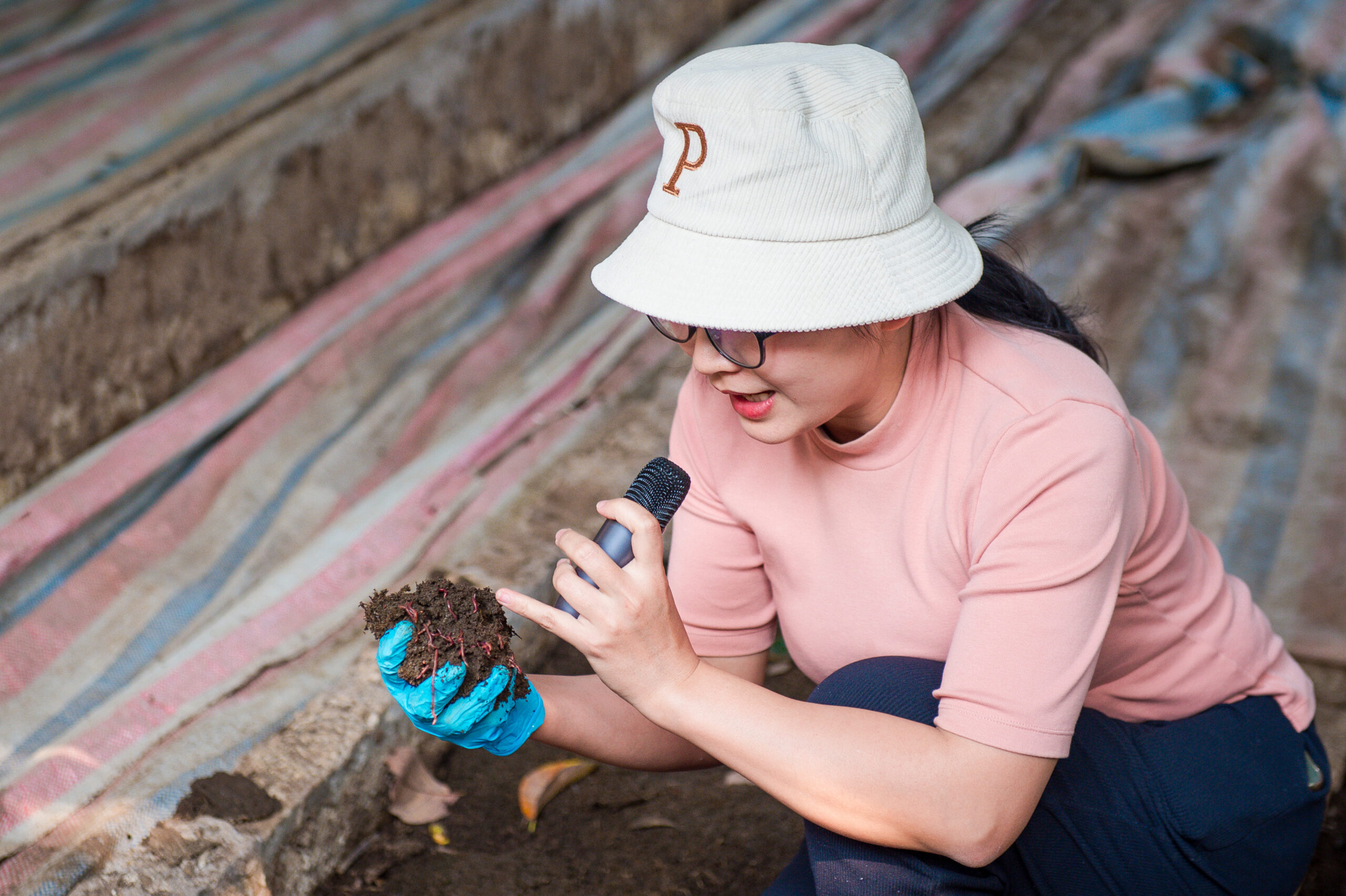As the world races to reduce carbon emissions, attention often focuses on fossil fuels and land-use change. Yet, beneath IndonesiaÔÇÖs coastal waters lies a vast, underused asset: mangroves and seagrasses that together make up some of the planetÔÇÖs most powerful natural carbon sinks.┬á
At a workshop on “Blue Carbon Economic Value and Indonesia’s Leadership” held in Jakarta on 14 October 2025, Indonesian scientists, policy makers and industry experts gathered to discuss how Indonesia can translate this ecological advantage into economic opportunity and how the countryÔÇÖs blue carbon agenda, as part of its forestry and other land use (FOLU) sector advantage. ┬á
IndonesiaÔÇÖs coastlines hold more than scenic beauty ÔÇö they anchor one of the planetÔÇÖs most powerful natural carbon stores. According to Daniel Murdiyarso, principal scientist at the Center for International Forestry Research and World Agroforestry (CIFOR-ICRAF) and president of the Indonesian Academy of Sciences (AIPI), the countryÔÇÖs extensive mangrove and seagrass ecosystem gives it a unique edge in blue carbon potential. Indonesia contains about a quarter of the worldÔÇÖs mangrove forests and 15 percent of the world’s seagrass meadows,┬á stretching along one of the longest coastlines on Earth. The countryÔÇÖs mangrove forests cover approximately 3.2 million hectares. “The [countryÔÇÖs] carbon reserves are around 3 billion tons,” Murdiyarso said. “If we conserve those carbon reserves, it would be the same as avoiding fossil fuel emissions.” Participants, speakers and guests gather for a group photo during the opening of the Blue Carbon Economic Value and IndonesiaÔÇÖs Leadership workshop at the National Library of Indonesia in Jakarta on 14 October 2025. The event brought together scientists, policymakers and practitioners to advance discussions on IndonesiaÔÇÖs blue carbon strategy and leadership in global carbon trading.
Conservation: a cost-effective climate strategy 
Unfortunately, the carbon economic value of mangrove conservation is still rarely discussed. “What’s often discussed is mangrove restoration for carbon sequestration,” Murdiyarso said. Yet restoration is far costlier than conservation. A 2022 World Bank study estimated the average cost of restoring mangroves in Indonesia at around USD 3,900 per hectare. ┬á
“And restoration efforts sometimes fail,ÔÇŁ Murdiyarso said. ÔÇťMeanwhile, conservation is much cheaper and provides far greater environmental services, so its benefit-cost ratio can be five times greater than the benefit-cost ratio of mangrove restoration. So if mitigating emissions from fossil fuel can be put on the agenda, our question today is, why can’t blue carbon reserves in mangroves be treated the same way?”
Building a credible blue carbon market 
Franky Zamzani, director of Climate Change Adaptation at the Ministry of Environment, said that efforts to conserve and restore blue carbon not only support IndonesiaÔÇÖs greenhouse gas emission reduction targets, but also provide additional co-benefits ÔÇö from ÔÇťpreserving biodiversity, enhancing fisheries productivity, strengthening coastal community resilience and creating new and equitable economic opportunities.ÔÇŁ ┬á
Zamzani believes that developing a credible market is key to turning IndonesiaÔÇÖs advantage into economic leadership. “Indonesia can be a pioneer in developing a global carbon economy while making a real contribution to global climate change control efforts,” Zamzani said. ÔÇťOne way to do this is by optimizing the country’s carbon economic value.ÔÇŁ
“Competitive advantage can only be achieved by developing an inclusive carbon market, supported by robust, transparent infrastructure to generate high-integrity carbon credits,” Zamzani underlined. “The future of carbon trading in Indonesia will be determined by the credibility and integrity of the carbon market we build, with carbon credits from each sector.”┬á
To date, Indonesia has developed multiple schemes to implement carbon-pricing mechanisms, including several Mutual Recognition Agreements (MRAs) with international certification bodies such as Verra and Gold Standard. These agreements aim to transform Indonesia’s comparative advantage into a competitive one in the international carbon market.┬á┬á┬á┬á┬á┬á
That transformation, however, depends on credibility. Wahyudi Ali Adam, assistant director of the Carbon Exchange Monitoring Division at the Financial Services Authority, agreed that the domestic Indonesian carbon market still lacks volumes, credibility and investor confidence. “When we talk about the transaction value on the Indonesia Carbon Exchange (IDX Carbon), compared with shares on the I stock exchange, it’s clearly much smaller,” Adam said. “Carbon transactions don’t happen every day. Daily share transactions can reach trillions of rupiah, while the total carbon transactions to date are only IDR 78 billion out of 1.6 million tons of carbon transacted.”
Beyond the IDX Carbon, the Indonesian government has also established bilateral trading partnerships ÔÇö first with Japan and later with Norway. Although cooperation with Norway was temporarily suspended in 2021 over technical payment issues, it was re-established in 2022 and has since further strengthened.ÔÇ»ÔÇ»┬á
Since January 2025, Indonesia has opened IDX Carbon to international buyers. Prices range from about IDR 96,000 IDR 96,000 (USD 5.8) per ton for Indonesia Technology-Based Solution (IDTBS) credits and IDR 144,000 (USD 8.7) per ton for IDTBS Renewable Energy unit. Domestic prices remain lower ÔÇö averaging USD 4 per ton in 2023 and falling slightly in late 2024. For Murdiyarso, those prices remain far too low. “In Japan, for example, the carbon economic value of seaweed recently reached USD 400 per ton,ÔÇŁ he said. ÔÇťIn Indonesia, even USD 10 per ton is considered too high.”
Trust, integrity and inclusion 
Aidy Halimanjaya, director of Just Transition Indonesia, said that trust is essential for creating competitive carbon prices and encouraging buyers to invest in national carbon projects. “Trust is built by a group of quality projects,” she said. “There aren’t many carbon projects in Indonesia. So, we need to prove it with the first hundred projectsÔÇö that are clear and cleanÔÇö so that trust can be built.”┬á
Similarly, Josi Katharina, senior researcher at the Indonesian Center for Environmental Law (ICEL), emphasized that buyersÔÇÖ trust relies on credible governance and integrity. “What is often highlighted by various stakeholders is environmental integrity,ÔÇŁ she said. ÔÇťEnvironmental integrity ensures we have robust, transparent governance and systems that ensure real emission reductions.” “We must translate the definition of integrity to the grassroots level,” said Aji Wahyu Anggoro, blue carbon program manager at the Yayasan Konservasi Alam Nusantara. He said communities need a stronger capacity to understand the economic value of carbon (NEK): whether all areas can have NEK worth selling, how difficult it is to measure and sell NEK and what constitutes a high-integrity carbon project. “So, I think giving training about it is important so that when they talk about environmental justice and benefit-sharing mechanisms, they know what their rights are, what percentage of the benefits they should receive and what the business is like.”
On the ground, Hendro Supeno, head of the Makmur Forest Farmers Group in Banyuwangi, East Java, explained that his group has been restoring and conserving mangroves along the coast since 1999. To date, the group has restored 1,600 hectares of mangrove forest. “For the people of Banyuwangi, understanding about carbon has not been well-socialized,” said Supeno.┬á
“We carried out the mangrove restoration without knowing the economic value of carbon,” said Supeno. “Without collaborating with academics, we certainly wouldn’t have understood what carbon is or its value. What we know is that restoration is for coastal protection, water quality improvement and coastal erosion prevention.” Participants attend the opening ceremony of the Blue Carbon Economic Value and IndonesiaÔÇÖs Leadership workshop at the National Library of Indonesia in Jakarta on 14 October 2025.
Beyond carbon: livelihoods and food security 
Mulia Nurhasan, a CIFOR-ICRAF scientist, hopes that funds from carbon trading can support local communities engaged in mangrove conservation. Her research highlights the wider social benefits of conserved mangrove forests. “First, mangroves provide an inclusive but limited income source,” she said. ÔÇťWith mangrove forests, anyone, including women, can earn income from fishing along the coast, without having to venture far out to sea.ÔÇŁ┬á
Mangroves provide an inclusive but limited source of income due to limitations that prevent communities from further exploiting the areas. “Because they have conserved the areas, they deserve economic incentives or subsidies for their services,” Nurhasan emphasized.┬á
Second, mangroves play a crucial role in food security. Another research conducted by Nurhasan shows that Indonesian coastal households living near mangroves consume 19ÔÇô28 percent more fresh fish than other coastal households. “Coastal communities that live near aquaculture areas, such as ponds, consume only about two percent more fish than other coastal areas,” she said.┬á
Nurhasan stressed that while restoration remains important, conserving existing mangrove forests must be the priority. “Restoration is crucial, but existing mangrove forests must not be destroyed and must be conserved,ÔÇŁ she said. ÔÇťThey are not only carbon sinks but also a vital source of inclusive and productive livelihoods for the communities. If conservation and restoration can go hand in hand, that would be ideal.”┬á┬á┬á ┬á
















